https://www.youtube.com/watch?v=71xYVjoQ5pk
ASBESTOS Popcorn Ceiling Removal - 5 SAFE Methods

So you got a popcorn ceiling like this that you wanna get rid of .
Well , I'm gonna show you five ways you can get rid of it even if you have asbestos in your ceiling .
Everybody .
Welcome back to my channel here at that kilter guy videos .
As always , I appreciate you guys stopping by .
My name is Guy Pal .
I'm a 35 year professional in the construction industry and I have owned my own business of Mr Patch drywall for the past 15 years .
And if you're into doing your own home improvement projects and you want to learn how to save some money , take pride in your workmanship and you want to learn how to do it right ?
Be sure to click that subscribe button down below and if you click the bell icon next to it , you'll get notified each time we put out a video .
If you don't click the bell icon , you won't get notified .
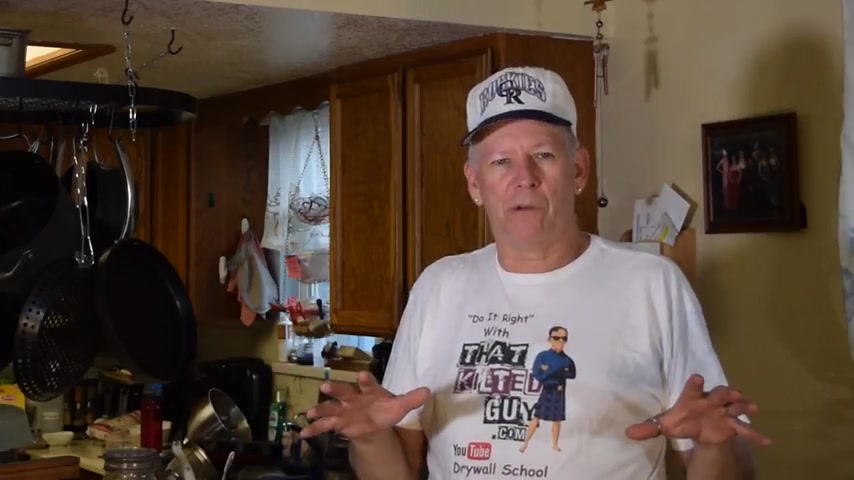
All right , before you do any type of removal , I recommend that you cover things .
I see a lot of videos where people just go in and just start doing it and then figure we'll just clean up as a pro , I would never do that because dust is gonna get by me if I'm wet , scraping , of course , it's gonna get everywhere .
And even if you are going to replace your floor , if you wet scrape , it's gonna get a slimy mess all over the wall .
So , unless you're gonna clean the walls and paint them , I prefer to just mask , it keeps it off the trim , the switches , the thermostats , all the things like that and you can get a roll of plastic .
That is 0.35 mil 400 ft long , 8 ft wide for about 23 bucks .
It'll do your whole house for just 20 some , some dollars and it saves a lot of clean up .
You don't have to vacuum your walls , wash your walls , all of that when you're done with this .
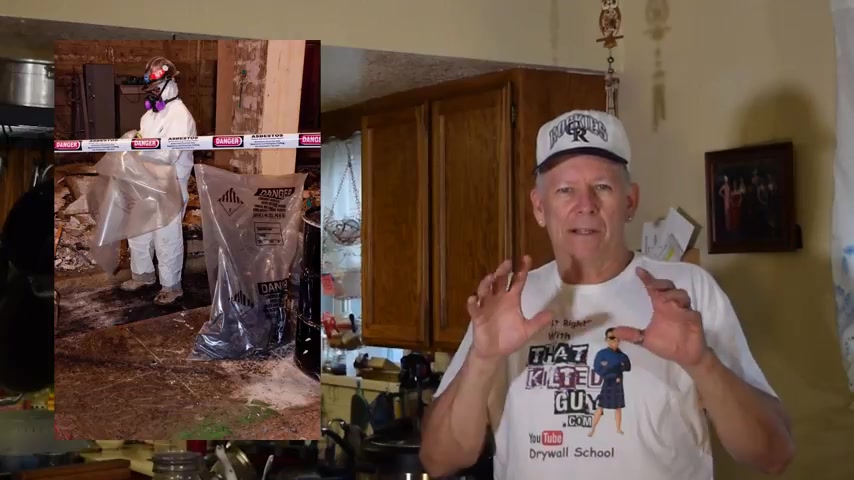
Now , I would definitely cover your floors and if you're gonna do the wet scraping , cover it with plastic because it'll go right through a wet drop cloth .
If you guys wanna know how to mask off a room , I'm gonna show that in a separate video on another day .
I think I have a job coming up where I'm gonna do that and I'll try and film and tell you all about the masking process .
Ok .
First off the , the first thing you really need to know is does your ceiling contain asbestos ?
Because if it does , that really changes everything , but you can still do this yourself or you can still hire a non asbestos abatement crew to get rid of it .
I'm gonna explain that further because you have to be careful with that here in the state of Colorado where I'm at Colorado Rockies , we can't remove it as a contractor unless we are licensed to .
So I never , uh , I never remove the stuff because I'm not gonna break the law that way .
But here in our state , homeowners can remove it .
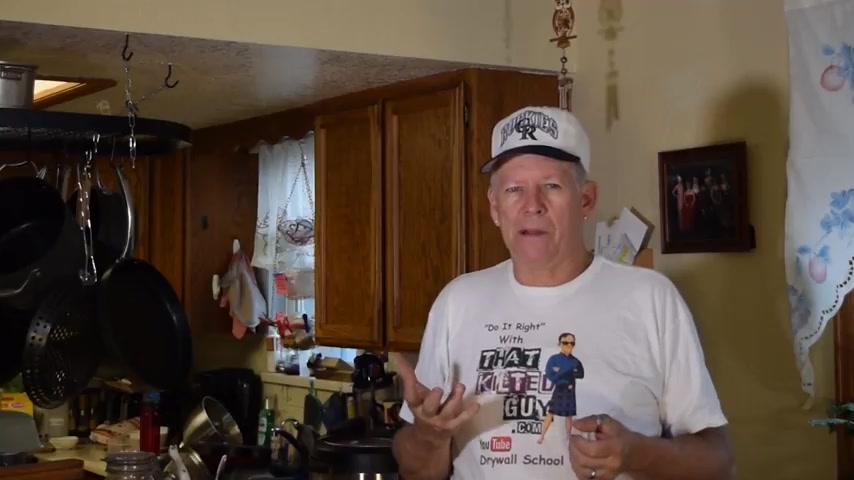
Now , I think that's kind of crazy because homeowners gonna look know less about how to remove it properly and they're gonna put yourself at risk .
But that's the way the law reads .
Here's the big question though .
Should you do it ?
Well , if it has asbestos in it , I would really recommend you don't because it's dangerous .
You know , we've seen all the stories about asbestos causing mesothelioma and that comes from breathing it , well , scraping it , you're gonna breathe some .
Now , I think if you , we scrape it , I would think that's a whole lot safer .
But I know that even when our wet scrape it , there's still some dust and then the next day after it dries there's dust on the floor , even if you scrape it up .
So it's still gonna have some dust dangers and when you clean up it's gonna get into the air settle all over your house .
There is some fairly affordable ways to get rid of it .
Ok .
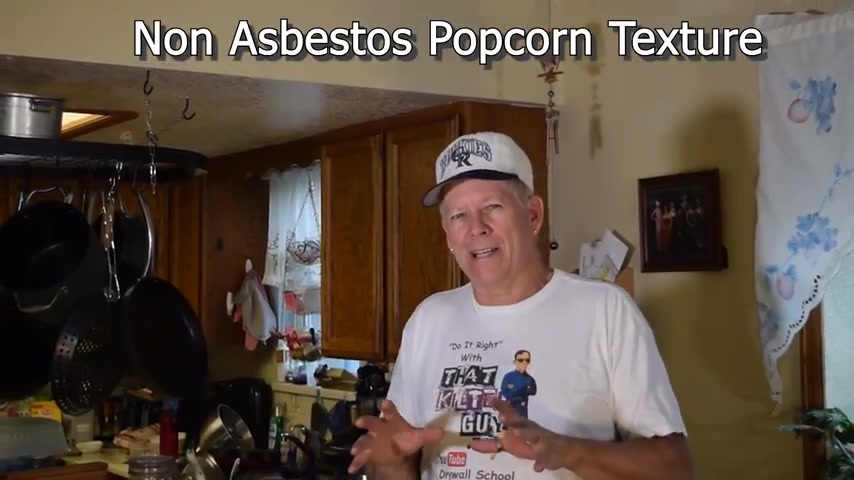
First , let's talk about if you don't have asbestos , you've gotten it tested or , you know , for some reason that it doesn't or if your house was built after about 1982 it's probably safe because up until 1979 they could put asbestos in it .
Not all of them did , but they could , and they allowed them to use up existing inventory after the ban went into effect .
So , who knows ?
It might have been 1980 81 or 82 .
Somebody still had some and sprayed some .
But after 1980 you're pretty safe .
So if you know , you don't have any , here's what I would recommend .
First off , you got to analyze the ceiling .
I usually walk into one .
I happen to be 62 .
I can stand here flat footed and touch it .
If I run my hand across it and nothing falls off .
It's been painted a lot and probably with some glossy paint .
If that's the case , it's not going to scrape off sand off or otherwise it's , it can be really difficult occasionally .
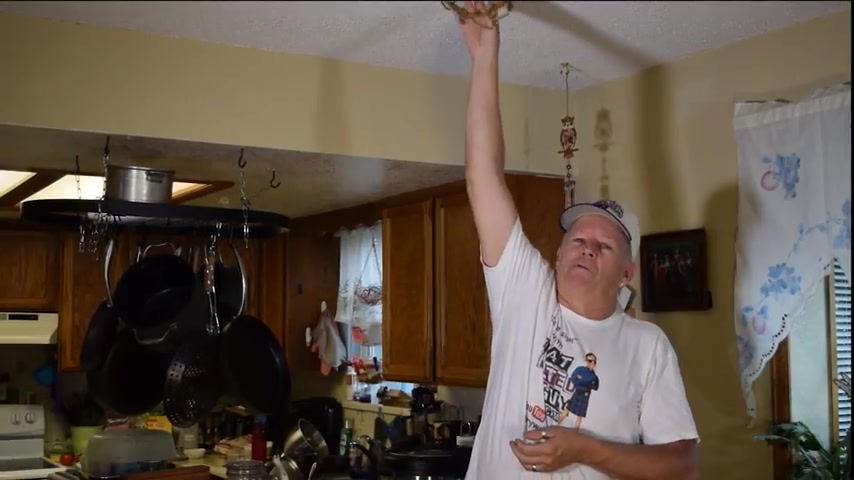
That's not true .
So I usually like to do a test scrape somewhere about a one square foot , maybe a closet , a back room , something where you can put it back if you have to or you can proceed to these other ways , I'm gonna show you .
So if you run your hand across and it falls off easily , like right now , you probably can't really see much .
But this one is falling off a little bit .
I could probably scrape this one because the glossier , the paint is the less chance you got of soaking it and scraping it and it just tends to lock it down .
So they flatters the paint and the less coats of paint , the better the chance of being able to scrape it .
Now , there's a couple ways of scraping it .
You can dry , scrape it .
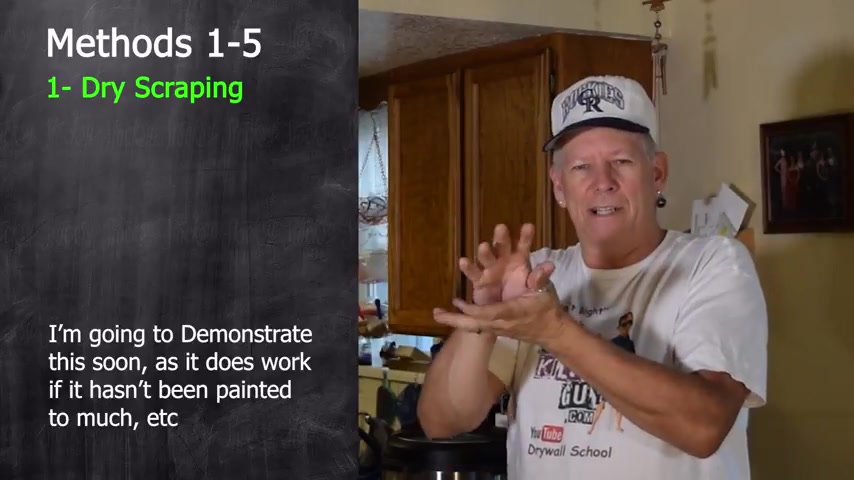
You might have seen some videos out there where people take like a vacuum and attach a knife to it and make it so that they scrape it and it vacuums it off .
You can do it that way sometimes .
But I can tell you that a lot of times if it's been painted at all , it doesn't scrape very easy .
And even then wet scraping is just easier , but it's messier so you can dry , scrape it with a vacuum .
You could just dry , scrape it , let it fall on the floor , you could sand it off .
Now , in this video here , I showed how we sand it off .
That only works again if it hasn't been painted because in that same video , I showed a spot where somebody had painted a repair about this big .
Once I hit that with my sander , it was like concrete .
It just didn't touch it .
And I was standing with 24 grit sanding disk .
It doesn't get any coarser than that .
You can sand it off if it's only been painted very lightly .
Like sometimes they just prime it to make it look white .
You might get by with it then .
So the only way you can know for sure is to try it .
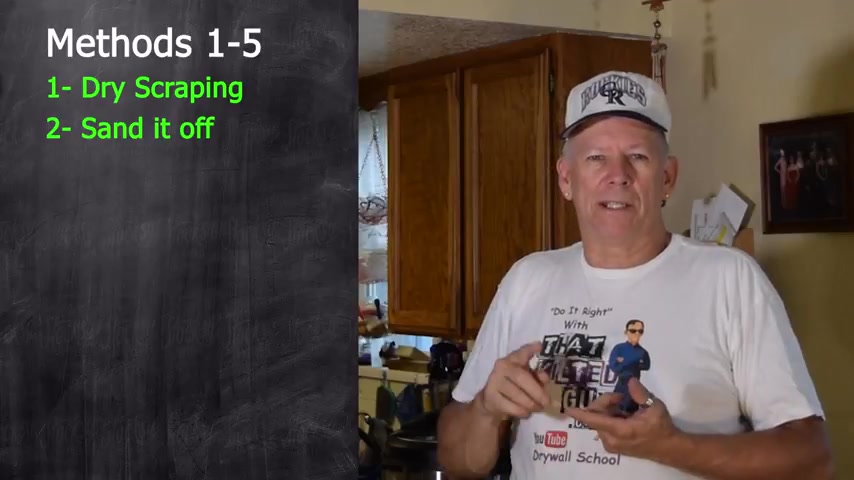
But the general rule is if it's been painted , it won't sand , sanding .
If you're gonna send it off , I'd recommend going down and renting a drywall sender like in the video here or I'm gonna put links to some affordable ones you can get on Amazon for under $200 and then all you need is a shop back , a drywall rated filter .
So it doesn't just blow it back into the room and you can do it yourself by sanding it off .
But if you're gonna try that , I'd get a sanding sponge that was really coarse and try sanding somewhere and make sure before you go to all that expense .
Ok ?
So that gets back to scraping .
If you're going to scrape it , you can also do it wet .
And that's how I've done probably 80% of my removals because once it's wet , I can scrape it with a 10 inch knife and like you see in the video here it goes through it like it's butter .
It's a lot less work on you .
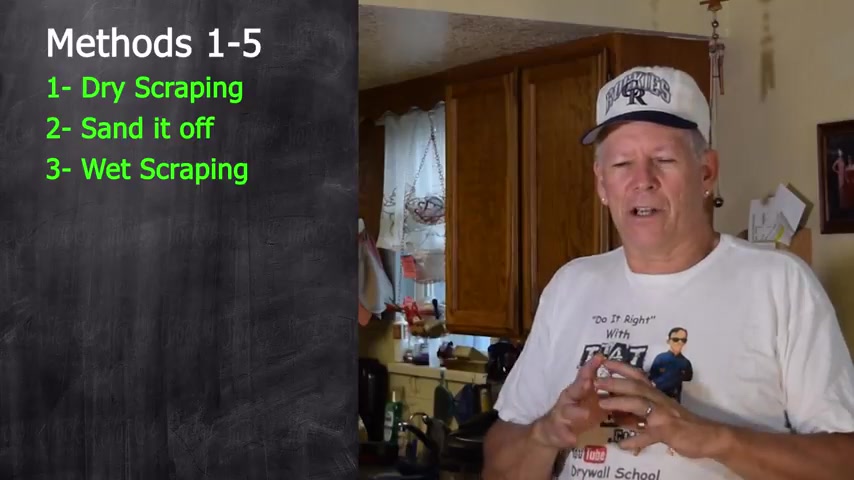
It , it can be a lot of work to dry , scrape it .
I've done it before .
Even with a six inch knife , you're gonna get a workout wet , scraping , it just falls off like butter like you , you like you can see in the video here it just falls off like butter .
The downside to that is , it's terribly messy and you're gonna be walking in it sticking to your feet .
So you might , I often just work barefoot and just wipe my feet off as I walk out and I usually have a trail of drop cloths out to my work vehicle .
So I don't track things everywhere anyway , but it will be messy .
There will be a lot of humidity in the air .
You can spray five gallons in a living room , for example , just to get it wet enough .
But if you wanna do that , watch this video here in this thumbnail , it's actually one of my most popular videos that'll show you how to wet scrape it and what the procedures are .
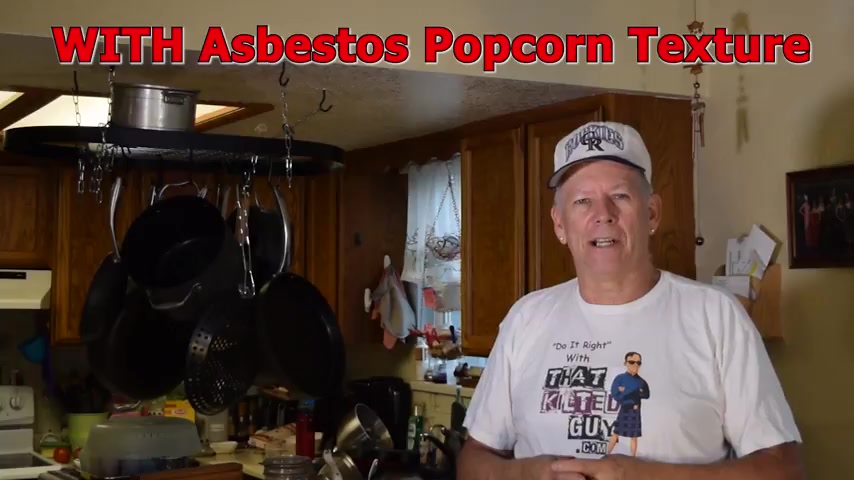
Now , if you determine that you have asbestos in your popcorn ceiling , one method you can get rid of it is skim coating it .
What you're basically doing is covering it up and not disturbing it .
So if you do the skim coating that I'm gonna describe here , you can't pre scrape it , you can't sand it .
You just have to go straight over it with mud , lock it into that mud , then you haven't disturbed it and you can do it that way , but you'll put a couple layers of mud on it , sand it down smooth and then you're back to a flat surface .
You can continue to finish it to a totally smooth surface or you can texture it .
But I will tell you that skim coating a popcorn ceiling is a lot , lot of work , but you can do it , just be prepared and know that you might take a lot longer than us guys who do this for a living .
If you wanna see how to skim coat it , how that goes .
Check out the thumbnail here and at the end I try and put a link to it as well as in the description down below .
Now , another way to get rid of it .
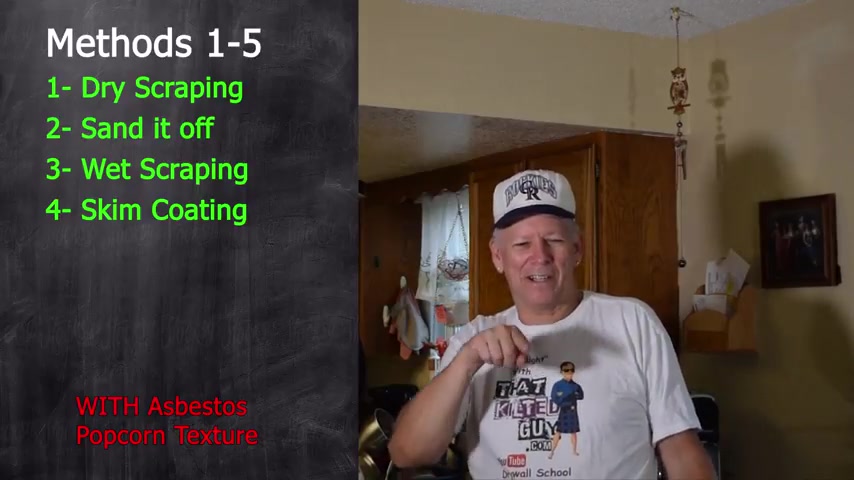
If your popcorn ceiling has asbestos , I have kitty cats and they're right in front of my lights right now , checking out the lights .
So , ok , the fifth way to get rid of popcorn ceiling is doing an overlay and this works well for if you have asbestos in it because what you're actually doing is putting a new layer of sheet rock right over the existing ceiling and then you basically have a new surface facing down and you finish it like brand new .
Again .
The drawbacks to doing an overlay is cost , I usually charge a dollar a square foot more if we have to do an overlay .
And that's partly because the sheet rock cost around 30 cents a square foot .
Right .
Now .
If you decide to go the route of putting an overlay , a new layer of sheet rock up , I highly recommend you hire professionals for that because number one hanging , it is not easy .
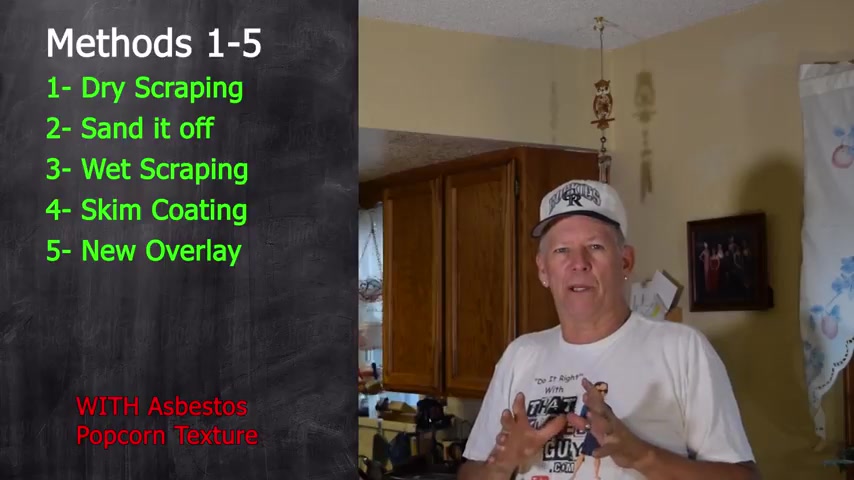
And hanging for an amateur is not real easy .
Anyway , a lot of people think that one's the easy part .
You can make a mess out of it .
But especially when you're doing an overlay , it's hard to find where the ceiling Joy Star , the screws wanna pop through .
The , um , hanging is a lot more difficult .
There's a few reasons , it's a lot harder .
One is , it's hard to get um sheet rock into an existing house when you're having to weave all through .
And when it's brand new , you can go through walls .
It's just easier to get in and you're trying not to bang up people's trim and all that .
And then often there is a lot more doors in the way and so on .
But the other big issue is when you hang new sheet rock , you hang the ceiling first and the wall second .
And part of the reason is because when we hang the ceiling , we can have up to like a 38 inch allowance of a gap over here .
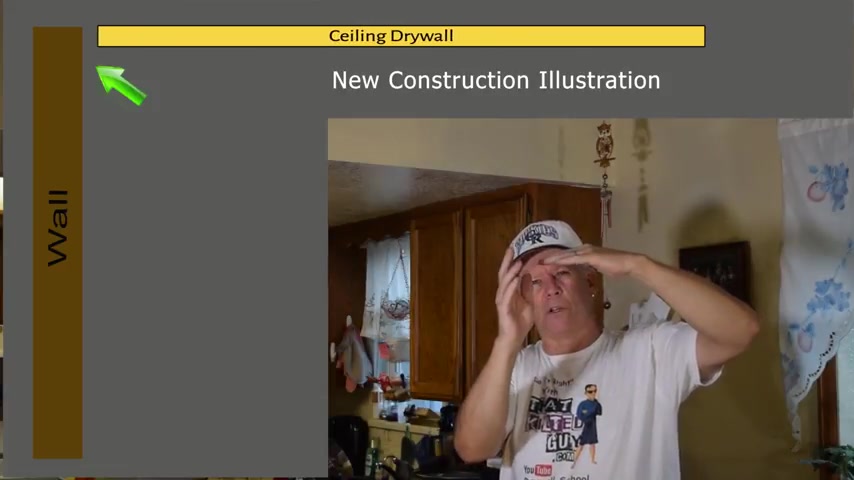
So if the wall is a little wavy , we cut it crooked or we didn't cut it quite long enough .
As long as the gap is only a quarter inch to 3/8 we can get by with that because now we're gonna slide a half inch piece of sheet rock up the wall and that'll cover that gap when we do it this way .
We're having to hang it right tight to the wall .
We can't have that allowance unless maybe you're gonna put in crown molding quarter round or trim it out in some other way , you could even put a rectangular piece up here .
But if you're not gonna do that , if you just want it to go back to dry wall , here's what I do .
I normally hang it nice and tight to the wall and I'm trying not to have to tape that angle because if I have to tape that angle where the sheet rock ceiling meets the wall , I'm gonna mess up your wall , then I'm gonna have to re texture it , then repaint it and that's a lot more expensive .
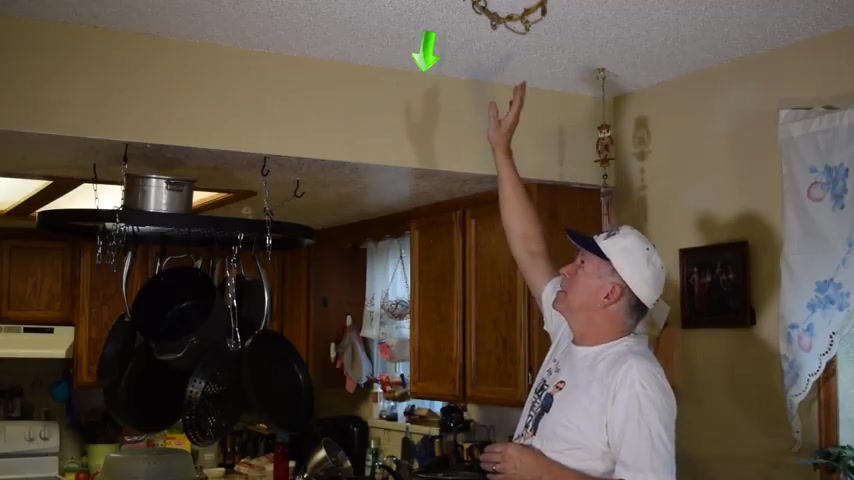
So what I do is I cut it tight and then when I get done , I just cock it and yes , cawing is fine because this layer is already sealed .
You didn't change anything there .
We just put a new layer on .
It's more cosmetic .
So if we ca that and you do a good job of it , don't get it all over the wall .
You didn't mess up the wall , you don't have to do any work on the wall .
Saves a lot of money to do it that way .
Now , sometimes you have to go back and cack it twice because it may shrink .
I try not to get it too round and so it may shrink a little bit and I'll usually call them twice just to make sure they look really good .
That cawing actually makes it easier to paint too because it's much easier to cut in when there's a caw round line versus a textured line .
Now , there's another disadvantage to doing that if you think about it and maybe some of you already did .
We're now lowering the ceiling by a half inch .
Right .
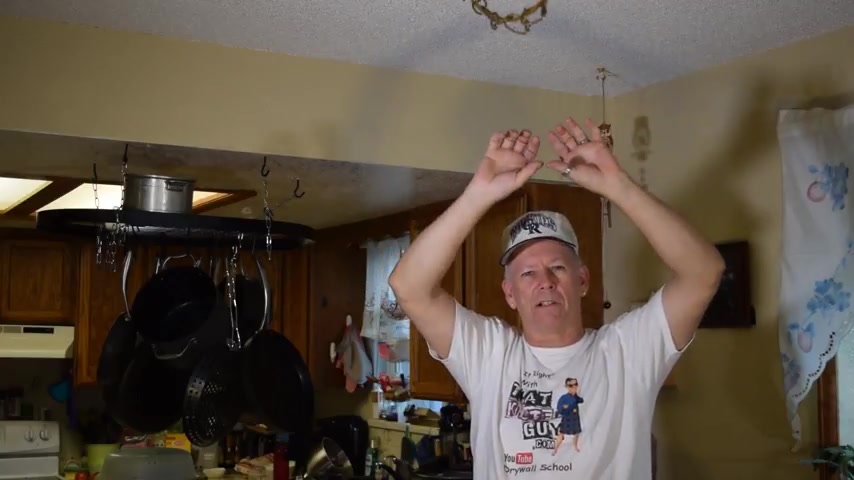
So that's gonna make things like boxes , electrical boxes where maybe you had a smoke alarm lights and so on .
Now , they're a half inch away from the ceiling .
You may have to get longer screws , you may have to do some different things , but generally it's , it's pretty easy to solve .
There are some cases I'm gonna show you a picture here of a skylight .
Let's say we did around this skylight , we would be lowering that a half inch .
Now , there would be this half inch gap between the trim piece where the arrow shows and the part going up into the skylight .
So look all around before you do that .
Take that into consideration , you may have to trim some things a little bit differently .
Ok ?
And here's bonus method number six .
If you don't wanna do any of these methods , you can cover it up by buying these ceiling tiles and just gluing them or fastening them to your ceiling .
These are from my Amazon store .
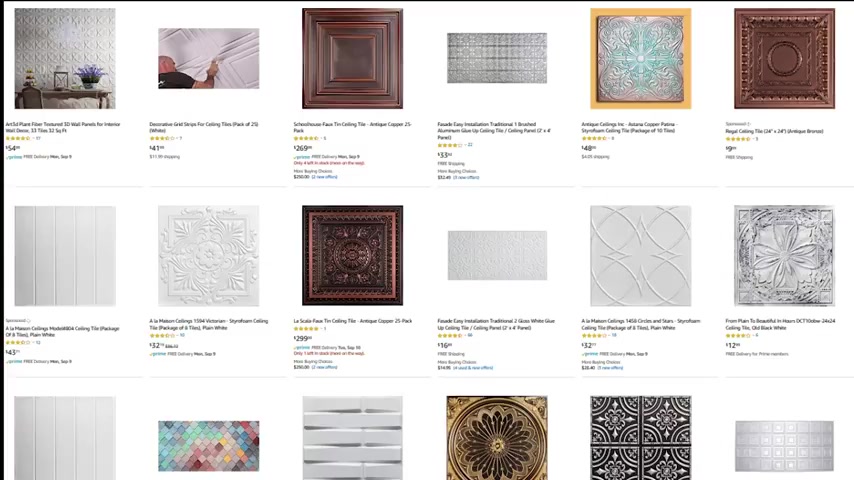
So I will put a link in the description down below if you want to check out the selection .
There's all kinds of patterns you can do and you can just glue it right over the top of the popcorn .
And if you use a sound deadening glue , I'll put the link to that down there too .
That will also help with reducing some more noise .
So check that option out too , but there you go five ways to solve your popcorn ceiling problem .
Hey , if you like learning how to do these kind of things , your own home improvement projects and so on .
Be sure to subscribe , click the bell icon .
That way you get notified when we put these videos out .
And I thank you guys so much for stopping by .
I will see you on the next video .
Take care everybody .
Are you looking for a way to reach a wider audience and get more views on your videos?
Our innovative video to text transcribing service can help you do just that.
We provide accurate transcriptions of your videos along with visual content that will help you attract new viewers and keep them engaged. Plus, our data analytics and ad campaign tools can help you monetize your content and maximize your revenue.
Let's partner up and take your video content to the next level!
Contact us today to learn more.